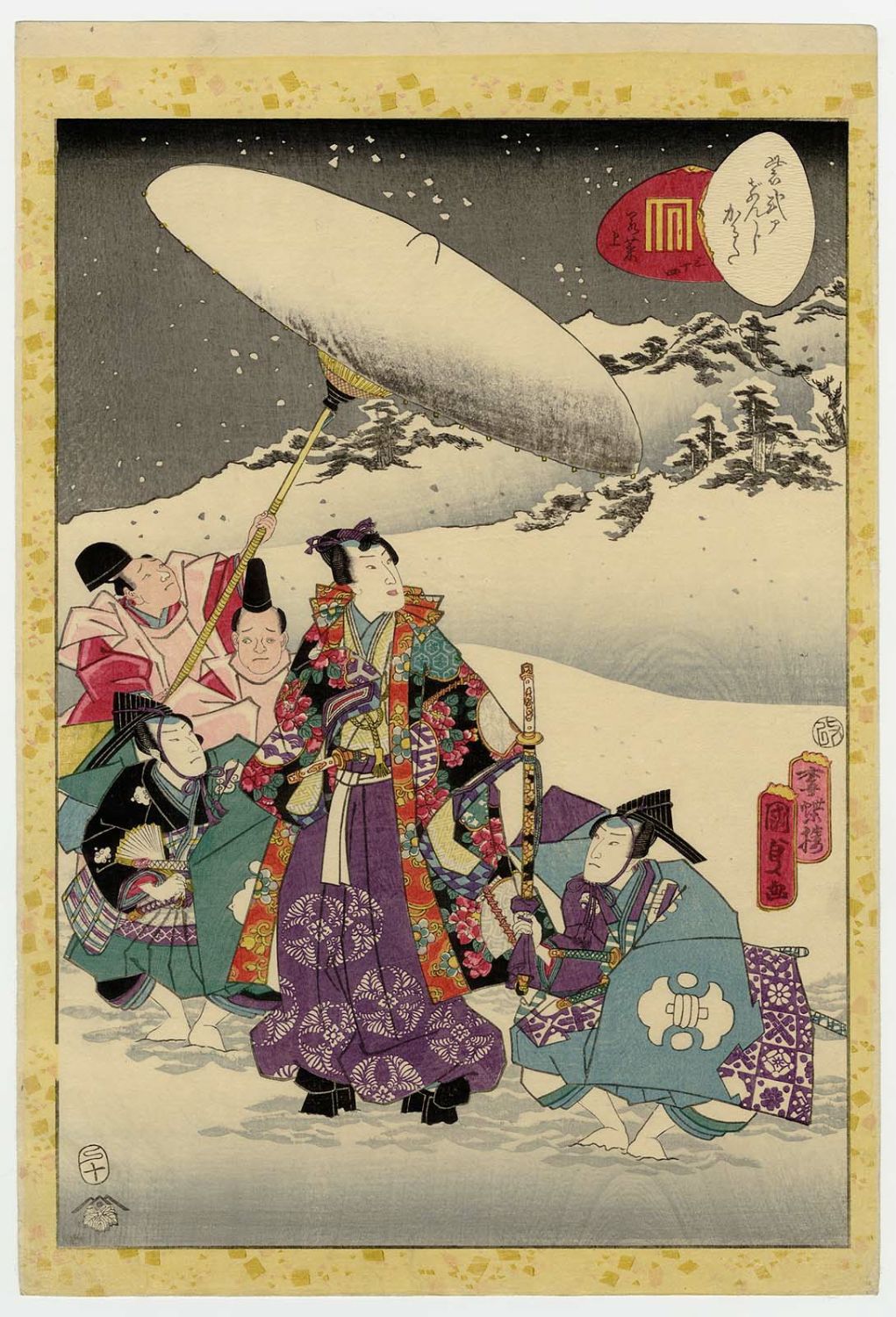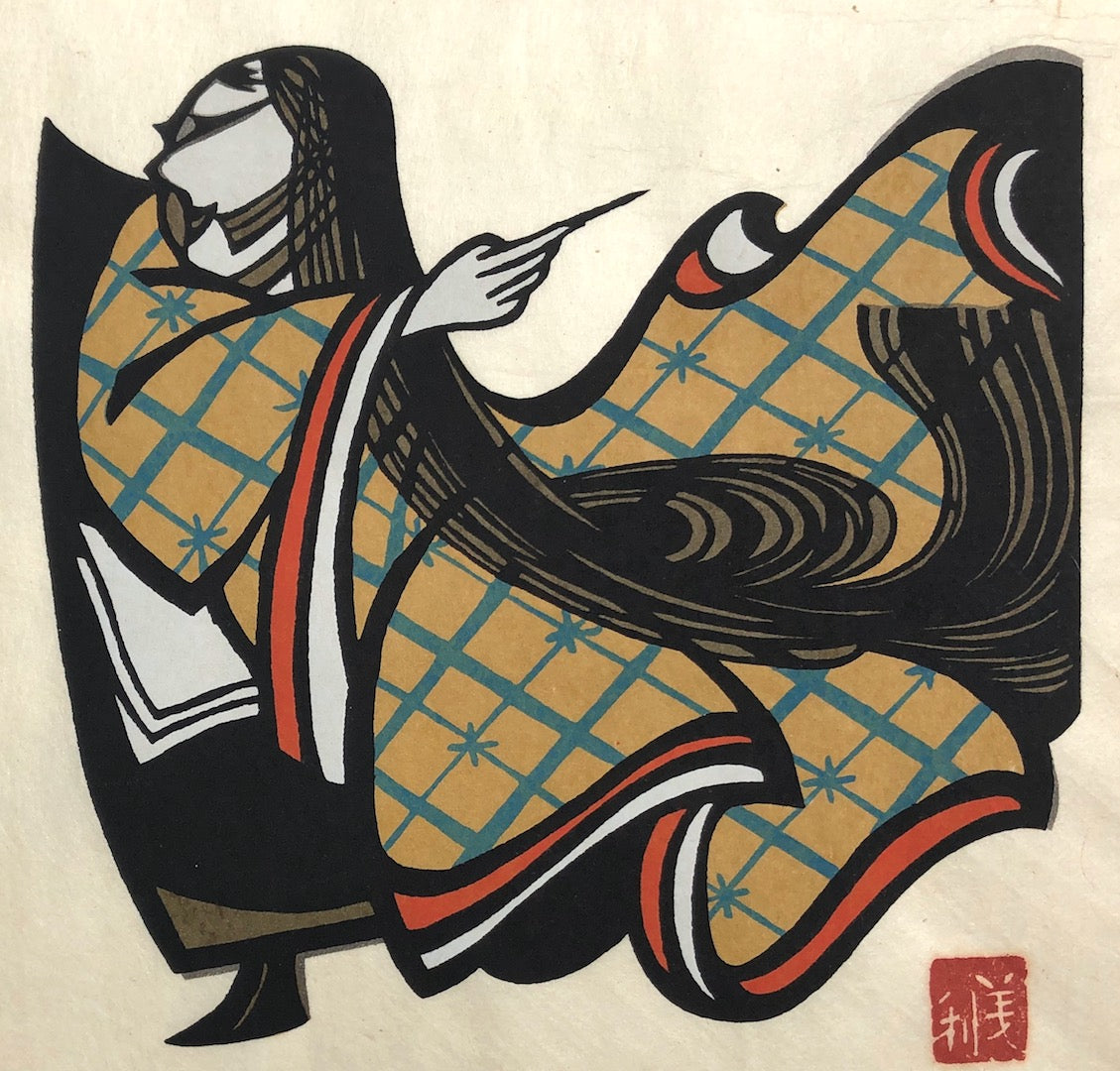

Īlthough she lived in the Imperial palace, Shōshi's main residence for was in one or another of her father's many mansions, particularly after the Imperial palace burned down in 1005.

The women at the two empresses' courts wrote some of the best-known and enduring Heian era literature. At Teishi's court as lady-in-waiting was writer Sei Shōnagon, author of The Pillow Book. Later Ise no Taifu, a talented poet and musician also joined. Michinaga invited Murasaki Shikibu, author of The Tale of Genji, to Shōshi's court, where she joined Izumi Shikibu and Akazome Emon. To give Shōshi prestige and to make her competitive in a court that valued education and learning, Michinaga sought talented, educated and interesting ladies-in-waiting to build a salon to rival that of Teishi and Seishi (daughter of Emperor Murakami).

Murasaki Shikibu, shown here in a late-16th-century illustration by Tosa Mitsuoki, joined Shōshi's court in c. She went on to hold the title(s) of Empress Dowager ( Kōtaigō) and Grand Empress Dowager ( Taikōtaigō). She gave birth to Imperial Prince Atsuhira in 1008 and Imperial Prince Atsunaga in 1009. She raised Imperial Prince Atsuyasu, Imperial Princess Shushi and Imperial Princess Bishi, the children of Empress Teishi until her son was born. As historian Donald Shively explains, "Michinaga shocked even his admirers by arranging for the unprecedented appointment of Teishi (or Sadako) and Shōshi as concurrent empresses of the same emperor, Teishi holding the usual title of "Lustrous Heir-bearer" kōgō and Shōshi that of "Inner Palatine" ( chūgū), a toponymically derived equivalent coined for the occasion". A year after placing Shōshi in the imperial harem, in an effort to undermine Teishi's influence and increase Shōshi's standing, Michinaga had her named Empress although Teishi already held the title. She became Imperial Consort, nyogo of the emperor.

įour years later Michinaga sent Shōshi, his eldest daughter, to Emperor Ichijō's harem when she was about 12. Because Teishi supported Korechika-later discredited and banished from court-her base of power disintegrated. In 995 Michinaga's two brothers Fujiwara no Michitaka and Fujiwara no Michikane died in rapid succession, leaving the regency vacant Michinaga won a power struggle against his nephew Fujiwara no Korechika, brother to Emperor Ichijō's wife Teishi, aided by his sister Senshi (mother to Emperor Ichijō, as Emperor En'yū's wife). In their stead, the top position in the power structure was held by a regent, with power often measured by the how closely the regent was tied by family relationships to an emperor. At this period emperors held little power, holding a nominal position for rituals, and often too young to make decisions. Fujiwara no Michinaga had four daughters he arranged to marry to emperors. In the middle of the 9th century Fujiwara no Yoshifusa declared himself regent to Emperor Seiwa-his young grandson-the Fujiwara clan dominated court politics until the end of the 11th century, through strategic marriages of Fujiwara daughters into the imperial family and the use of regencies. She continued to be an influential member of the imperial family until her death at age 86. In her late 30s she took vows as a Buddhist nun, renouncing imperial duties and titles, assuming the title of Imperial Lady. As empress she was able to surround herself with a court of talented and educated ladies-in-waiting such as Murasaki Shikibu, author of The Tale of Genji.īy the age of 20, she bore two sons to Ichijō, both of whom went on to become emperors and secured the status of the Fujiwara line. Because of his power, influence and political machinations she quickly achieved the status of second empress ( 中宮, Chūgū). Her father sent her to live in the Emperor Ichijō's harem at age 12. Empress Shōshi with her infant son Atsuhira is depicted in this 13th-century painting, with her father Fujiwara no Michinaga and lady-in-waiting Murasaki Shikibu presiding at the 50-day ceremony of the child's birth.įujiwara no Shōshi ( 藤原彰子, 988 – October 25, 1074), also known as Jōtōmon-in ( 上東門院), the eldest daughter of Fujiwara no Michinaga, was Empress of Japan from c.


 0 kommentar(er)
0 kommentar(er)
